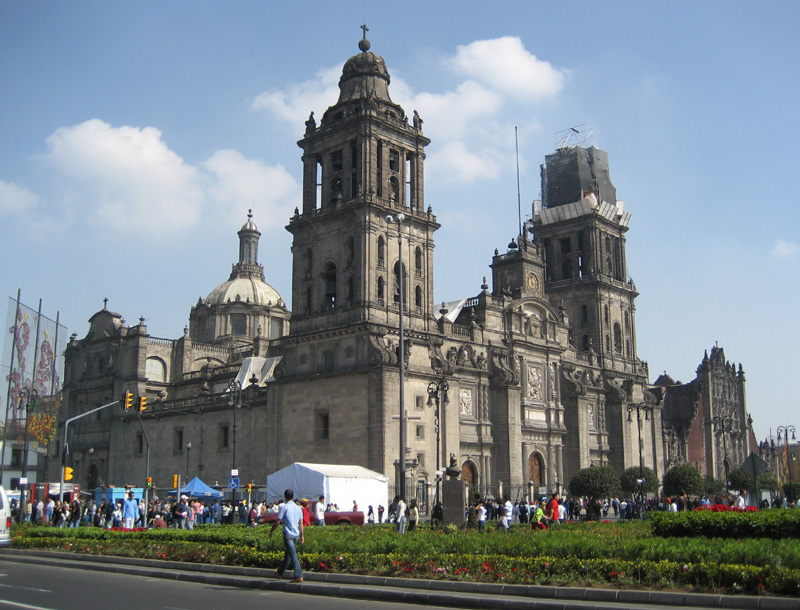Source: WTL photo© on site in Mexico City, 2008.
More images: See: => Mexico City #5a; => Mexico City #5b; and => Mexico City #5c.
Comments: This building is one of the great architectural monuments of Latin America: the Catedral Metropolitana. This building on the right is the 18th century Sagrario Metropolitano, which is gradually sinking into the soft soil on which Mexico City was built. The Cathedral was designed in 1544, but construction continued from 1573 to 1813. Hence, this edifice contains nearly three hundred years of architectural and artistic styles: late Gothic/Renaissance, Baroque, and Neoclassical. This Cathedral is the seat of the Archbishop of the See of Mexico in the Roman Catholic Church. The Archbishop since 1995 is Cardinal Norberto Rivera Carrera (b. 1942 in the state of Durango). He was promoted to the position of Archbishop and Primate of Mexico by Pope John Paul II. Under Cardinal Rivera, Juan Diego (i.e., Cuauhtlatoatzin or Cuauhtla Tóhuac) was canonized in 2002 in the Cathedral. The Cathedral was constructed on part of the former Aztec sacred site in Tenochtitlán next to the Aztec twin pyramid (see: => Mexico City #7 and => Mexico City #8). In fact, the Conquistadors razed the pyramid and used the pyramid's stones to build much of the Cathedral. Apparently, Hernán Cortés himself laid the first stone of the original church. One historical detail to be noted from the textbook's Chronology of Mexico is this:
1924-1928 Plutarco Elías Calles (1877-1945) is President.
1926-1929 Cristero revolt (cry of “Viva Cristo Rey”/Long Live Christ the King). President Calles forced through anti-Catholic
legislation that expropriated Church lands (except for the churches themselves), forbade men and women clerics to wear religious clothing in public, etc. Many Catholics engaged in armed rebellion against the government.
The Cathedral was closed during Calles' four years and, as a protest against Calles' anti-religious measures, the Pope at the time, Pius XI, closed the church while forbidding priests to stop performing their religious rites in all the Catholic churches throughout Mexico. The Cathedral was reopened in 1930.
Humanities topic: In a paragraph, reflect on the twin events mentioned above: (A) the canonization of Juan Diego and (B) the closing of the church under President Calles.

